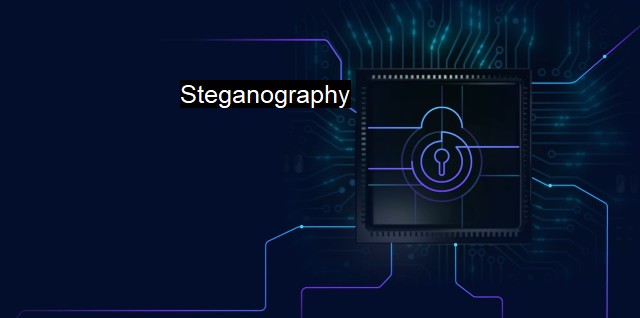What is Steganography?
Unseen Communication: Exploring the Hidden World of Steganography in the Digital Age
Steganography, derived from the Greek words ‘steganos’ meaning covered or secret, and ‘graphein’ pertaining to writing, is the art and science of concealing information within other non-secret text or data. What distinguishes steganography from cryptography is that while cryptography focuses on keeping the contents of a message secret, steganography focuses on keeping the existence of a message secret.In a cybersecurity and antivirus context, steganography poses a significant threat. It is essentially a form of security through obscurity. Unlike the straightforward tactics of malware, ransomware, and similar software-based attacks, steganography takes a roundabout approach by embedding data within data, leaving no clue to its existence, but funnels the information through nonetheless. In doing so, steganography makes it difficult for security measures to detect malicious activities. The insidious and stealthy nature of steganography makes it particularly troublesome in the cyberworld, as data files can be structured to noticeably disguise malevolent codes.
In contemporary digital steganography, manipulations are often applied to bits of data to conceal information within audio, video, or image files. For instance, changes can be made to the color of a pixel in an image subtly that is undetectable to the human eye, but it can carry binary information. Another example is hiding information in Internet Protocol (IP) packets' header area. These tiny alterations do not significantly increase the size of the carrier, nor provoke traditional defences such as firewalls and Intrusion Detection Systems (IDS).
A steganalysis tool is the foil to steganography in cyber security. It is designed to detect and negate the secrets being transmitted via steganographic techniques. Steganalysis operates to cache, collate and analyze page files or network data, seeking anomalies or suspicious patterns that may denote encoded and hidden information.
For the antivirus industry, innovative technologies focused on detecting steganography form a crucial battleground. AV software will have to evolve to detect such threats before they can cause harm. For instance, an advanced antivirus application should be capable of automatically scanning images or audio files for anomalies that may indicate the use of steganography. Such creates a challenging conundrum, since the more innovative a detection algorithm is, the more possibilities it opens for a new generation of steganographic techniques exploiting those very same algorithms.
Although an antivirus endeavoring to uncover steganographic threats isn't always able to explicitly detail the property of the covert content, it can inspect a suspected file for signs of steganography, such as examining file sizes, color histograms, or conducting a statistical analysis for anomalies. Identifying a shell meant to house steganographic data helps in monitoring the potential ingress points for data leakage or attacks.
Typically, advanced persistent threats (APTs), which are typically state-sponsored or from an organized crime group, will use steganography as a way to control command and control (C&C) communications as well evade AV and IDS detection systems. The increasing popularity and exploitation of steganographic techniques in recent times, by individuals, cyber-attackers, and even nation-states, must direct greater focus on deploying advanced steganalytic equipment for a secure cyber world.
Steganography pre-dates the computer era, which is a testament to the uniqueness and effectiveness of its strategies. The rapid advances of the digital technology and the internet provides new avenues for the evolution of this seasoned method of information obfuscation. The escalating intersections of this obfuscation method within cybersecurity and antivirus fields highlight how imperative it is to keep up with these changes and maintain persistent surveillance of such covert communications. steganography significantly impacts cybersecurity and antivirus by creating a stealthy channel for malicious activities. Hence cybersecurity infrastructure to detect and counter such concealment techniques is of utmost necessity.

Steganography FAQs
What is steganography in cybersecurity?
Steganography is a technique of hiding a message or information in another file format, such as an image, audio, or video file, to conceal its existence. It is used in cybersecurity to transmit sensitive data securely without arousing suspicion.How does steganography differ from encryption?
Encryption is a technique of converting original data into a coded form to prevent unauthorized access. Steganography, on the other hand, does not alter the original data but hides it in plain sight within another file.Can steganography be detected by antivirus programs?
It depends on the type of steganography used. Some simple techniques, such as least significant bit hiding, may be easily detected by antivirus software. However, advanced techniques like spread-spectrum steganography are much harder to detect.What are some real-world examples of steganography attacks?
Steganography has been used by cybercriminals for nefarious purposes, such as hiding malware in legitimate files to evade antivirus detection. In one such incident, cybercriminals used steganography to hide the Carbanak malware in image files and transferred it to banking systems to steal millions of dollars.| | A | | | B | | | C | | | D | | | E | | | F | | | G | | | H | | | I | | | J | | | K | | | L | | | M | |
| | N | | | O | | | P | | | Q | | | R | | | S | | | T | | | U | | | V | | | W | | | X | | | Y | | | Z | |
| | 1 | | | 2 | | | 3 | | | 4 | | | 7 | | | 8 | | |||||||